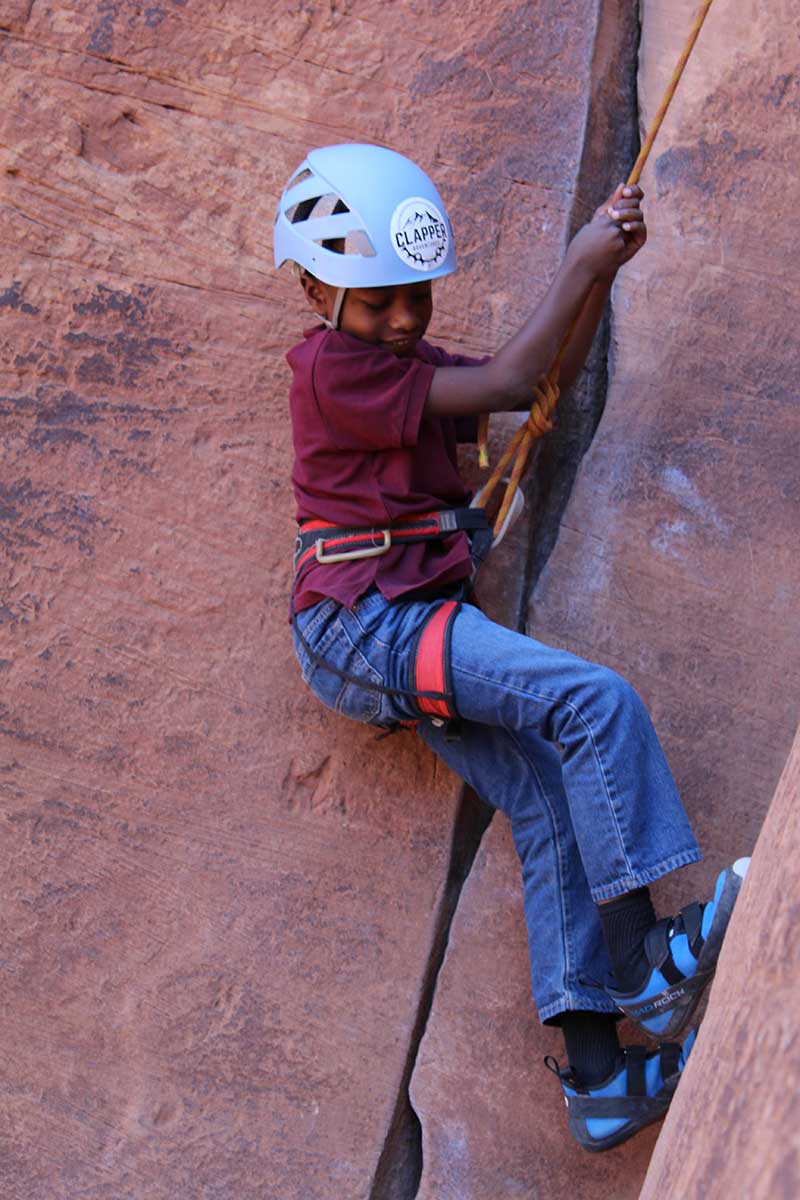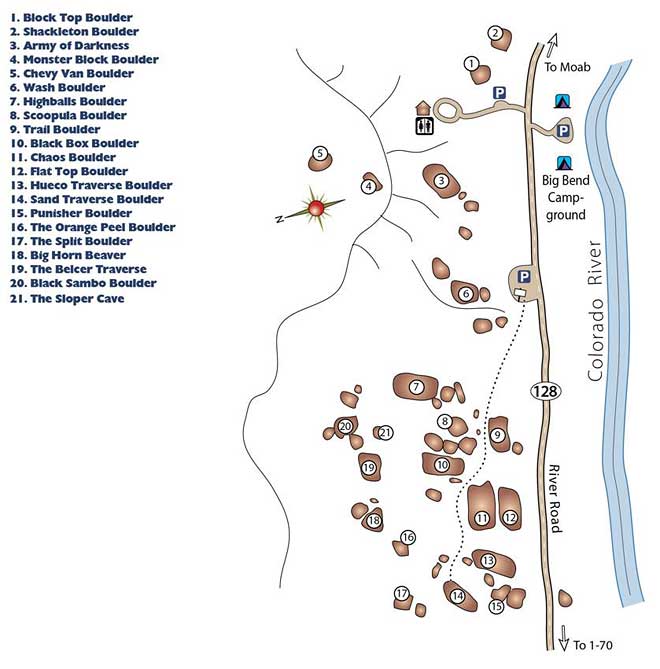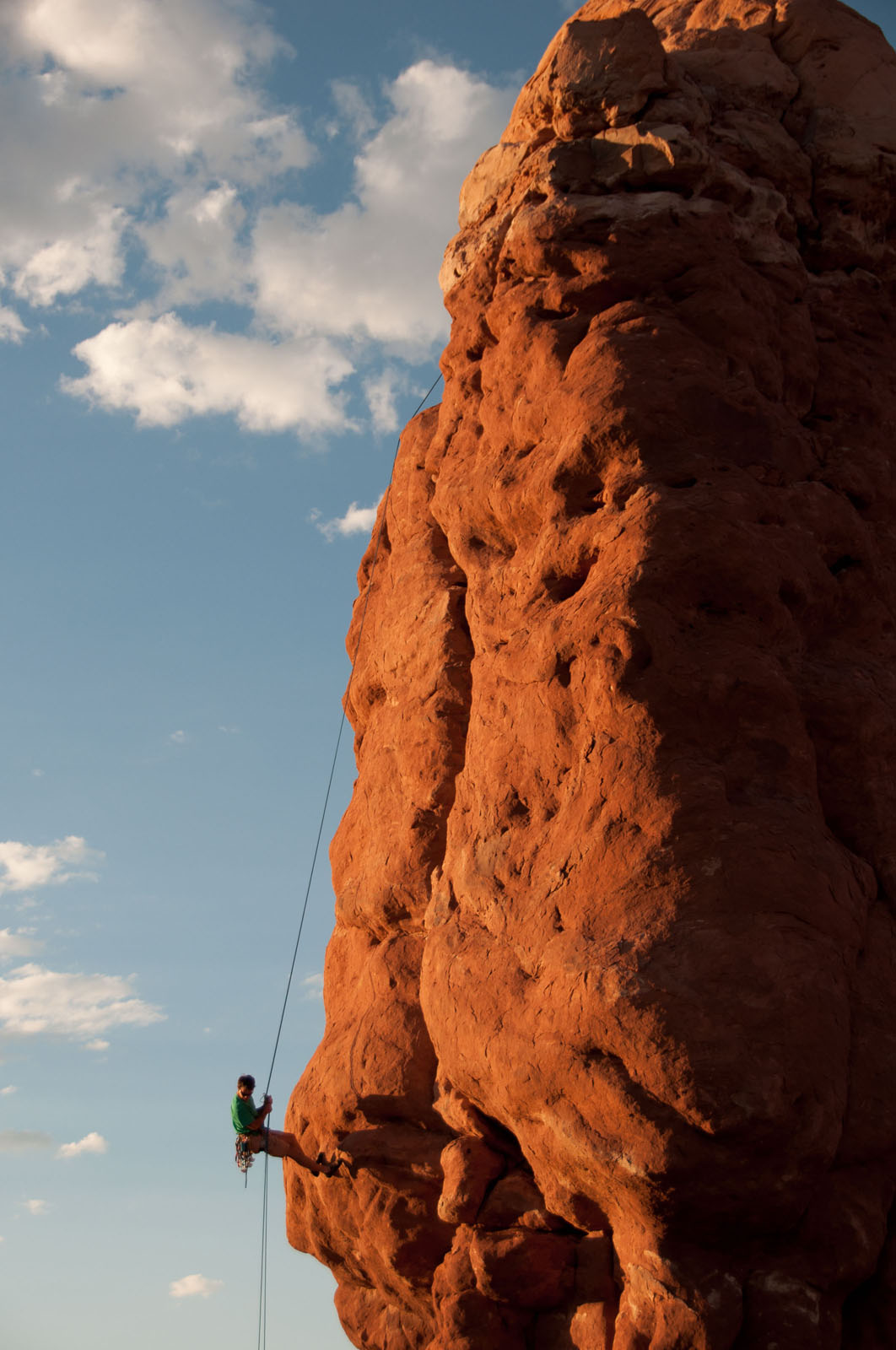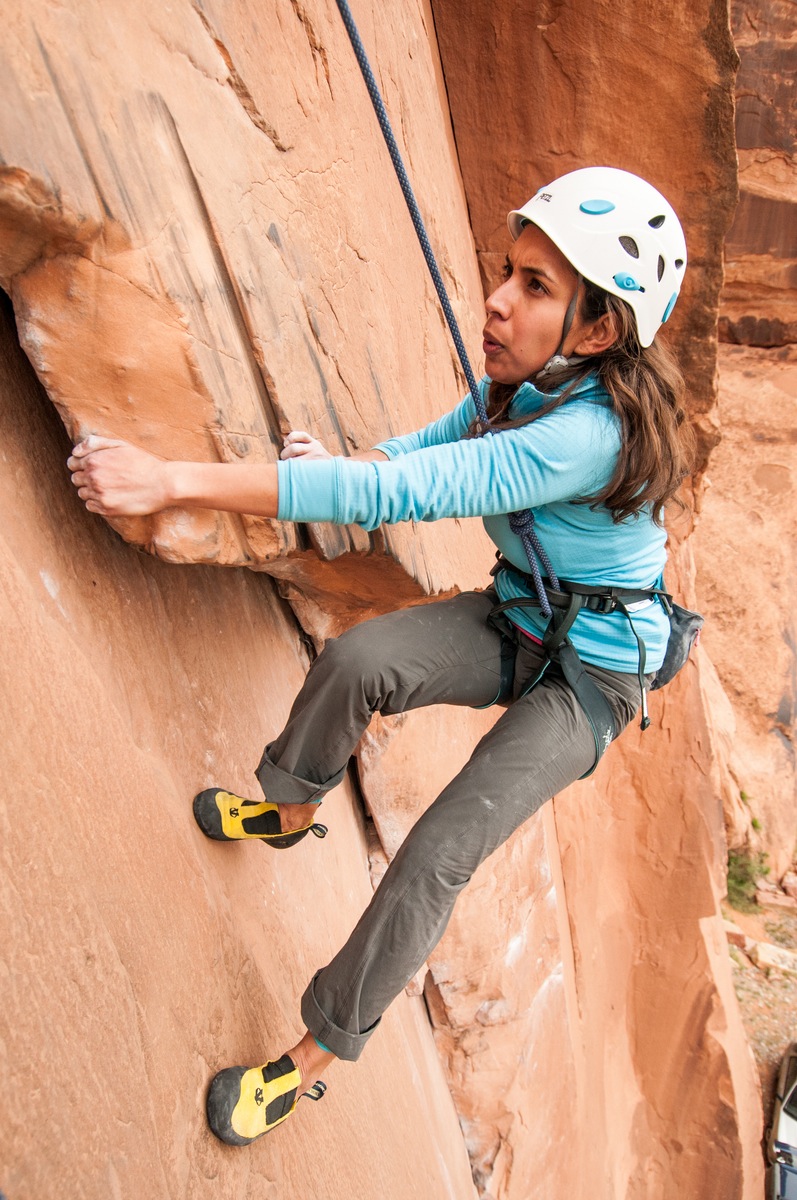
Rock Climbing and Canyoneering
Discover why people from around the world come to experience rock climbing and canyoneering in Moab, Utah. Moab has many professional guides and outfitters to help you find the perfect trip to match your pace and skills. Moab rock climbing and canyoneering are one-of-a-kind adventures you don’t want to miss!
Canyoneering
Moab’s beautiful water carved canyons, inaccessible without technical skills, await your discovery. Moab’s experienced canyoneering guides will teach you the skills required for adventurous hikers to explore Utah’s remote red rock canyons. No previous climbing or rappelling experience is required. Anyone who is reasonably fit can experience the adventure of a lifetime. Hire a local guide to expedite an introduction to Moab’s canyoneering areas. A complete list can be found on our Guides & Outfitters page.
Granary Canyon
- Technical, but what Canyoneering route isn’t?
- 45 minute drive from Moab
- 6 rappels (120’, 70’, 60’, 40’, 20’, 200’)
- 6 miles hiking
- Located along the Longs Canyon Road off of Hwy 313

The Bureau of Land Management recommends not utilizing the Granary Canyon route from April through August due to Big Horn Sheep in area. (All commercial permits are restricted from utilizing this route from April through the end of August to allow wildlife room to roam.)
Morning Glory
- 2 rappels (95’ and 120’)
- 3.5 miles hiking
- 10 minute drive from Moab
- Located off of the Sandflats Road
Climbing
Moab’s Climbing Landscape
With easy access to thousands of routes on hard, high quality sandstone—not to mention soaring red cliffs, out-of-this-world rock formations, and enough variety to keep all levels of climbers engaged, Moab is a must-visit destination on your climbing bucket list. Several of the best-loved climbing areas in the West are just a stone’s throw from downtown Moab. Whether your specialty is splitter cracks, clipping bolts, or desert towers, there’s something in the Moab area for you.
Unfamiliar with Moab?
Hire a local climb guide to expedite an introduction to area routes. A complete list can be found on our
Guides & Outfitters.
On Your Own
Wall Street
Located along Hwy 279
River Road Dihedrals
Loca
With Children
Proficiency is paramount supervising children in climbing. Do not expect to climb at adult limits with children. Moab has
terrific climbing companies and their familiarity with the region is worth the investment.
School Room
Located on Hwy 279 in the Wall Street vicinity
Ice Cream Parlor
Located on Kane Springs Road
Slabs on Hwy 313
Located 2 miles from Hwy 191 on Hwy 313
Two anchors are set 80 ft up and can be walked to from the left.
Camping Near Climbing Areas
Wall Street
Bureau of Land Management sites Jaycee Park and Williams Bottom Campgrounds are close by on Hwy 279.
River Road Dihedras
Bureau of Land Management sites Goose Island and Granstaff campgrounds are close by on Hwy 128.
The National Parks
Arches National Park
Canyoneering and rock climbing activities in Arches National Park will be actively managed and monitored according to the
“August 2013 resulting Climbing and Canyoneering Management Plan”.
It is the responsibility of the visitor to be aware of new regulations and updated Superintendent compendiums.
NPS Laws and Policies
While establishment of new routes will be allowed, installation of new fixed gear on new and existing routes will require
a free special use permit. In order to minimize resource impacts, the park will actively seek input and assistance from
the climbing and canyoneering community in assessing the suitability and quality of new fixed gear placement proposals,
and replacement of existing fixed gear.
For details about group limits, obtaining required permits and regulations use the following links.
Canyoneering
Climbing
Canyonlands National Park
Island in the Sky District of Canyonlands National Park has the best quality rock and some established climbing routes.
Permits are only required when staying overnight in the backcountry.
Climbing is prohibited into cultural resources, on arches or natural bridges of Canyonlands or the Orange Cliffs Unit adjacent
to the MAZE District of Canyonlands. No altering rock by any means. Power tools are prohibited. Colored or Non Marking
Chalk is required in the Parks. Be familiar with Regulations and exceptions.
NPS Laws and Policies









